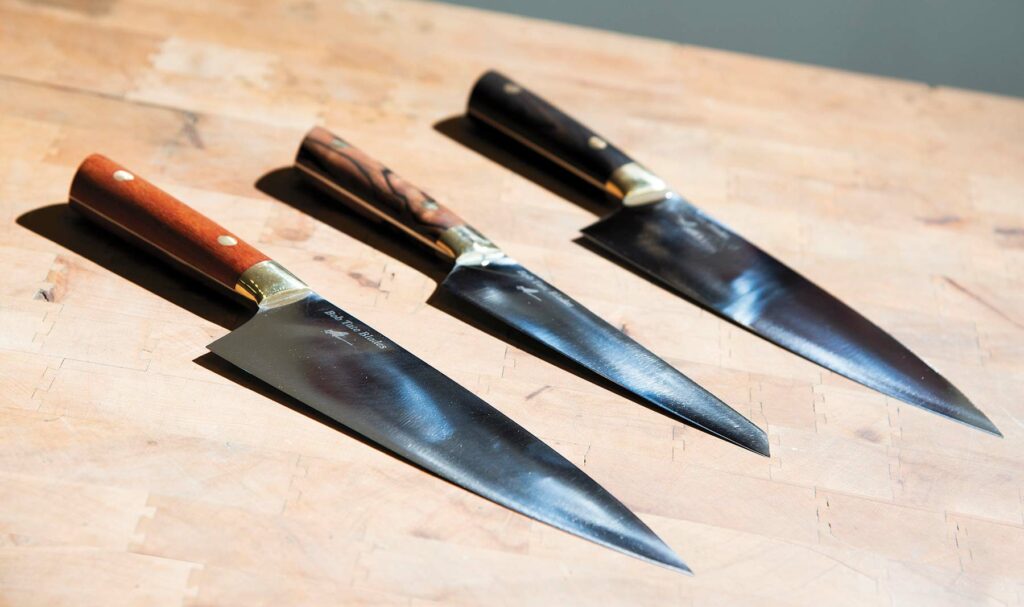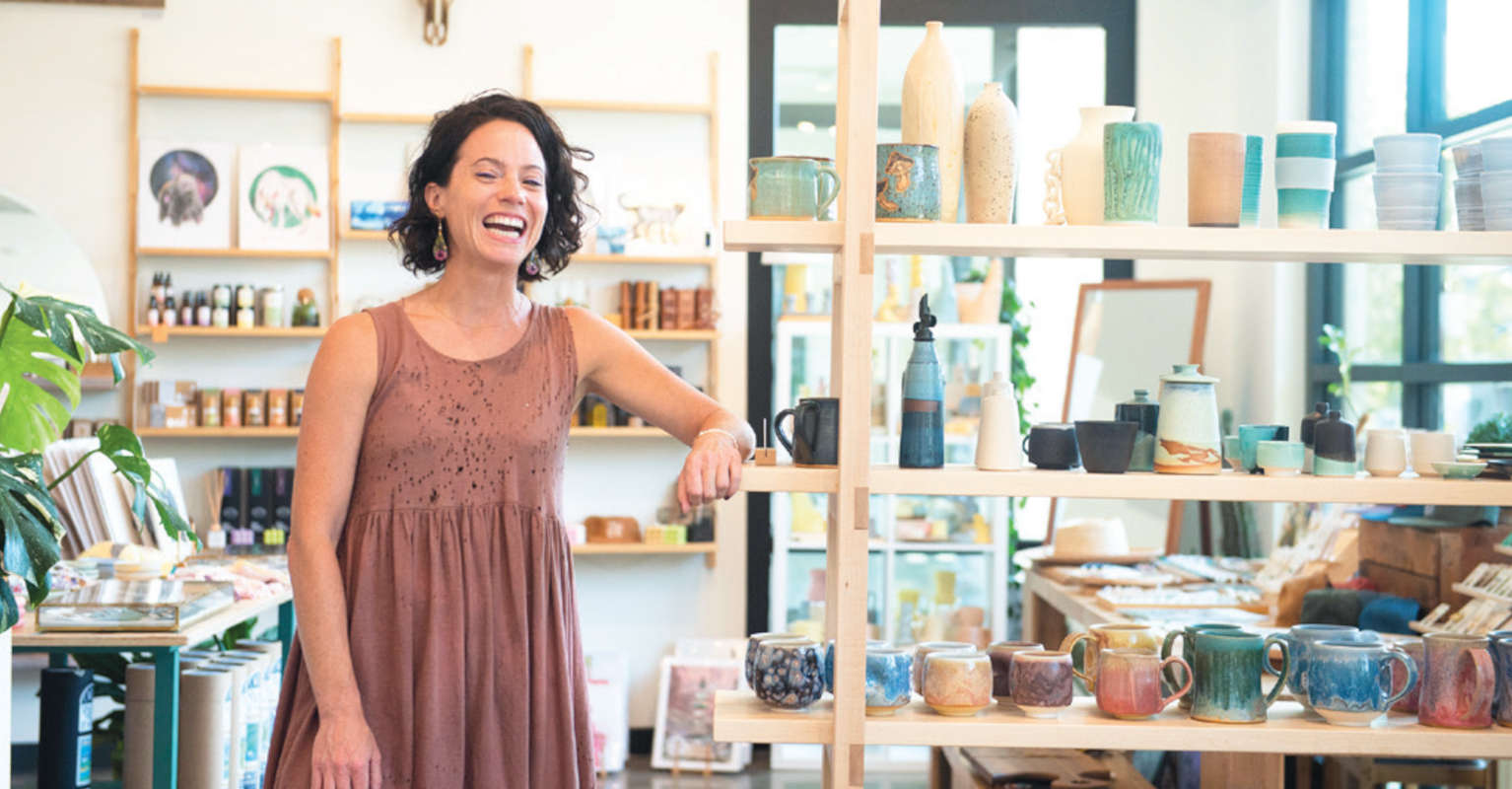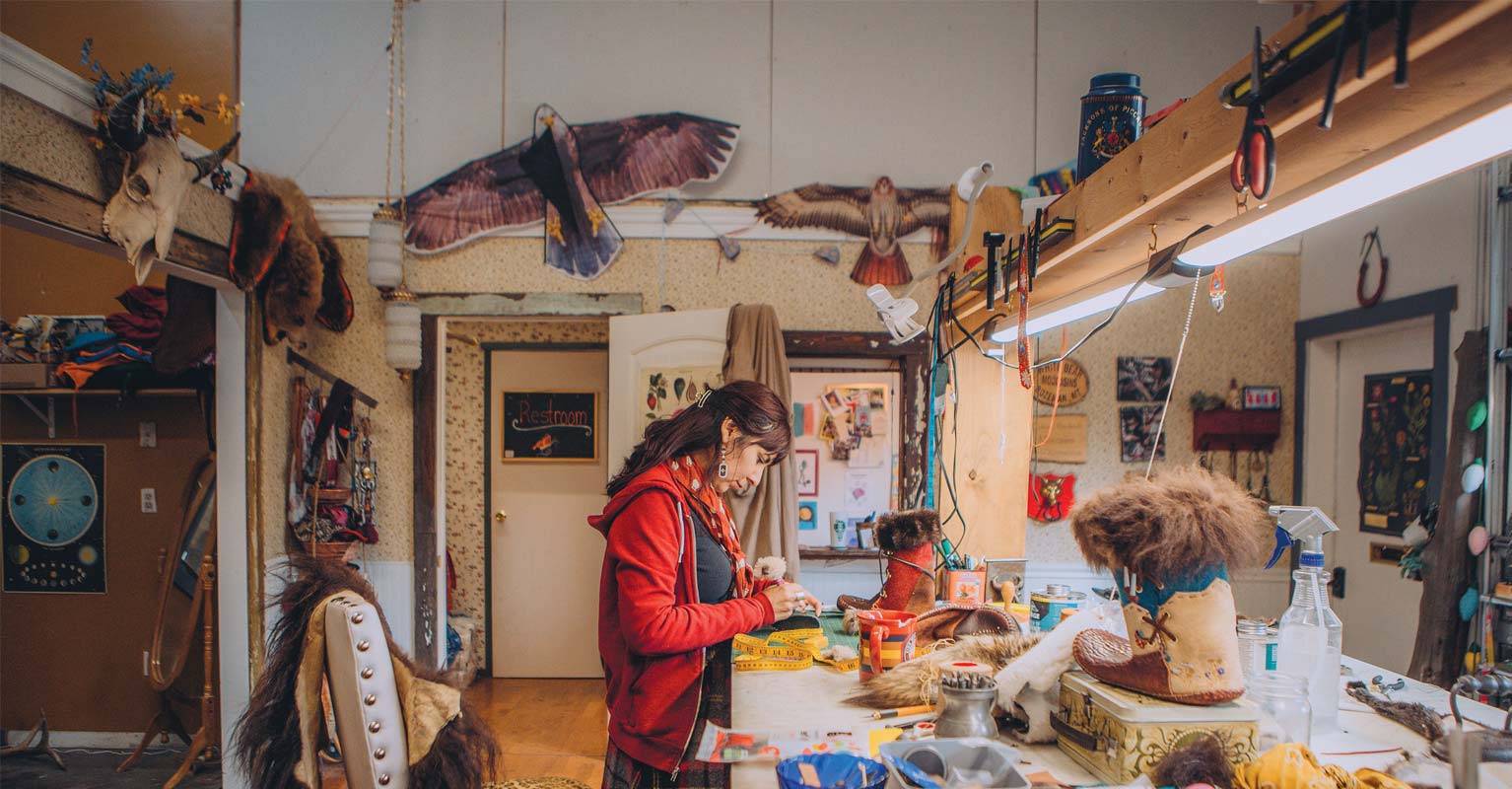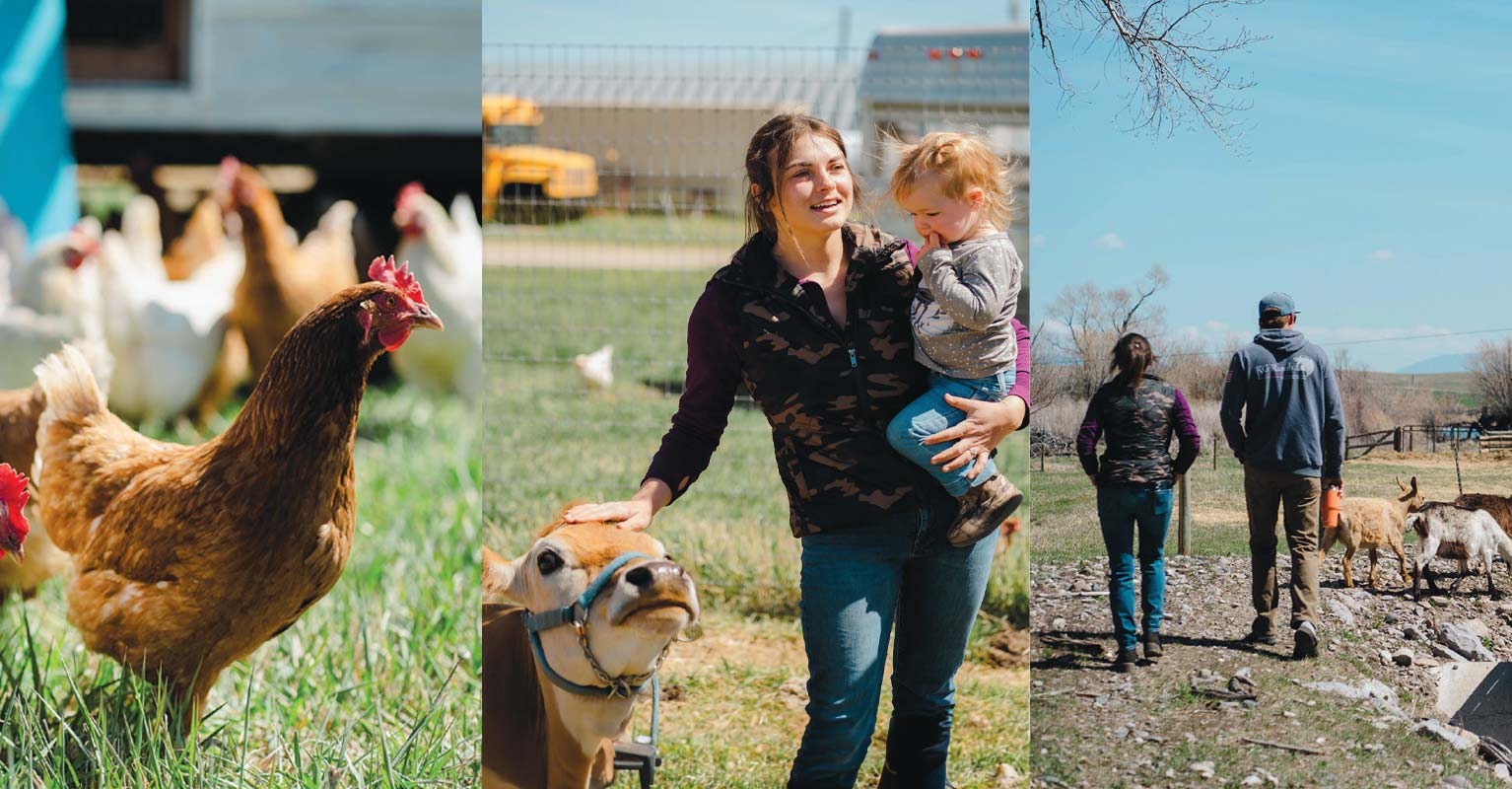Bozeman Knife Sharpening Elevates the Chef’s Greatest Tool
At Bozeman Knife Sharpening, brightly colored walls are decorated with an assortment of knives. I’m first greeted by Dottie, a small Havanese-Poodle mix. Then, Wendy Tate offers me coffee and homemade shortbread before leading me behind the front desk to the workshop, where her husband, Bob Tate, is shaping the wooden handles on several of his custom knives. The couple work together at the shop, Bob sharpening and making knives while Wendy oversees marketing and customer service.
Bob excitedly describes the components of his work: belts of varying textures that he uses to precision sharpen knives; an array of wood that he crafts into handles––cocobolo, Turkish walnut, ebony, rosewood; the antique butcher block that he uses to demonstrate chopping and at-home sharpening techniques to his customers. His enthusiasm for his work is contagious, and throughout our tour I find myself eagerly picking up 50-pound wood blocks and balancing freshly sharpened knives on my fingers, just to join in on the fun.
Bob and Wendy opened Bozeman Knife Sharpening one year ago after fulfilling a longtime dream of moving to Montana. Before that, they operated their sharpening business out of Seattle, where Bob sharpened more than 13,000 knives a year. As they settle into their new location, they know building a similar customer base will take some time, but they are trusting of the process. Thus far, an estimated 90 percent of their clients are home chefs, while the other 10 percent are industry professionals and hunters.

Though the Tates still receive orders from across the country, Bob is enjoying the change of pace their new location has provided, allowing him to focus on the time-intensive process of knifemaking. Now, he spends a majority of his days designing and crafting his own line of knives.
While the quality of his work speaks for itself, what really sets Bob’s business apart is his desire to share his knowledge. For most home chefs, Bob recommends honing knives every two or three uses and having them professionally sharpened once or twice a year. This varies depending on how frequently the knives are used, the cutting board material, and the items being cut.
“The knife is the main tool in the kitchen that bonds people to their food,” Bob says. “We use it to prep virtually everything in the most direct way.” He derives meaning from the knowledge that his work is improving this daily ritual in people’s lives. “No other work I’ve done, not even cooking professionally for 20 years, has drawn as much positive feedback as the simple act of sharpening a knife.”




